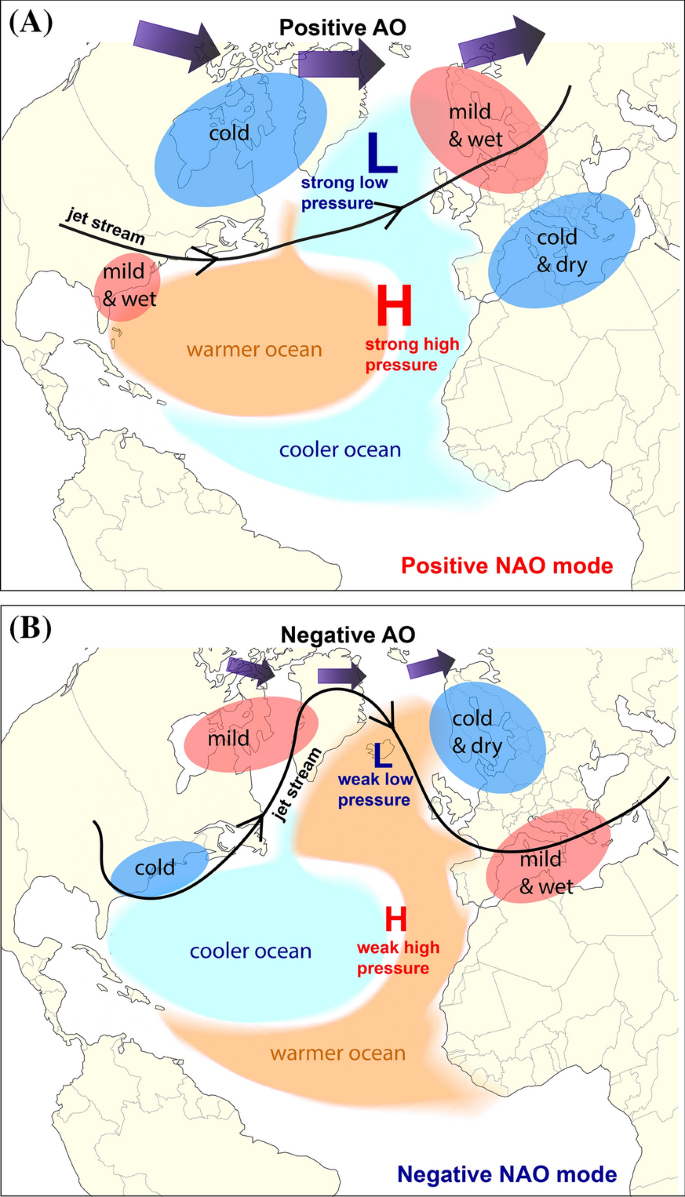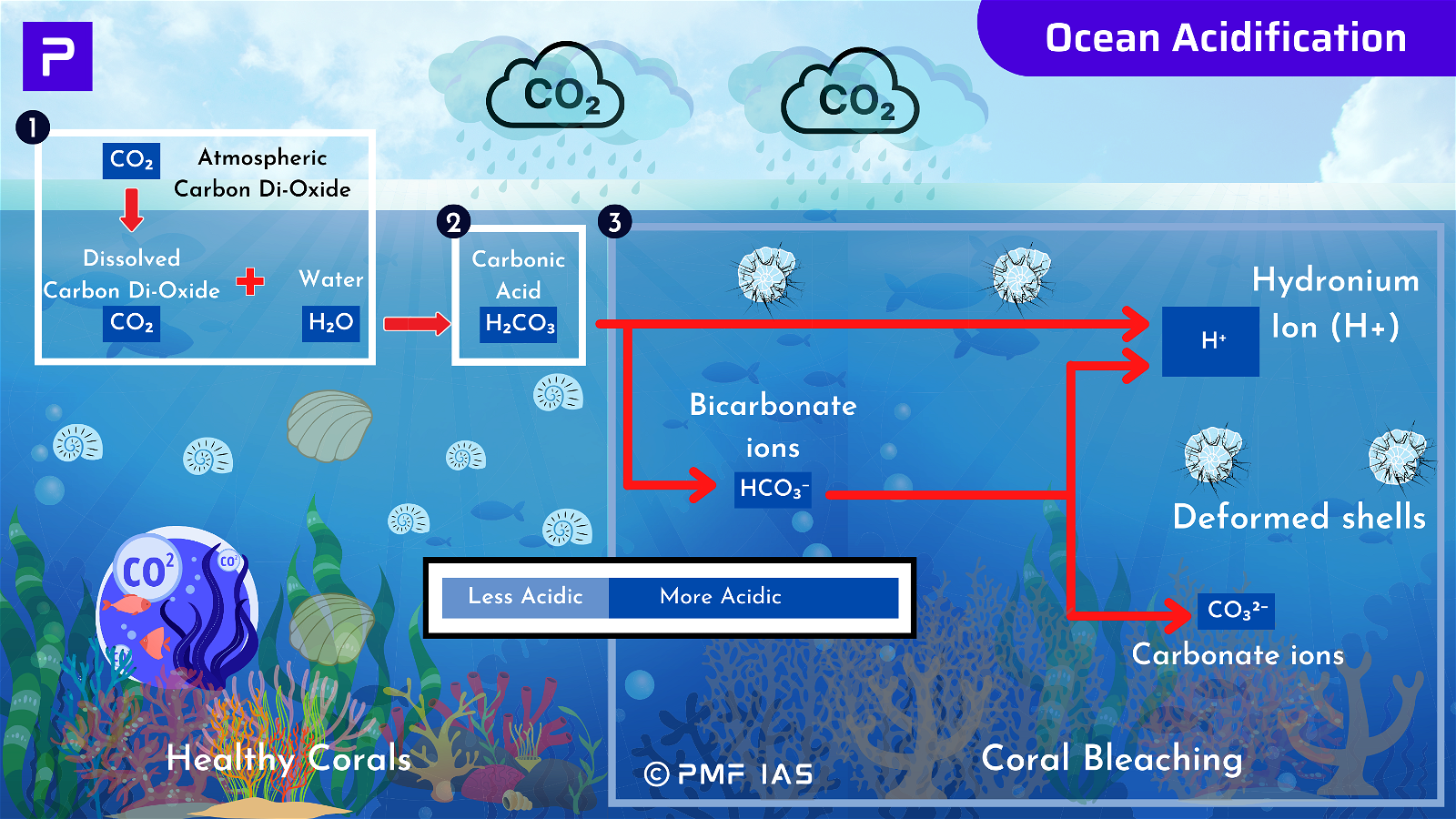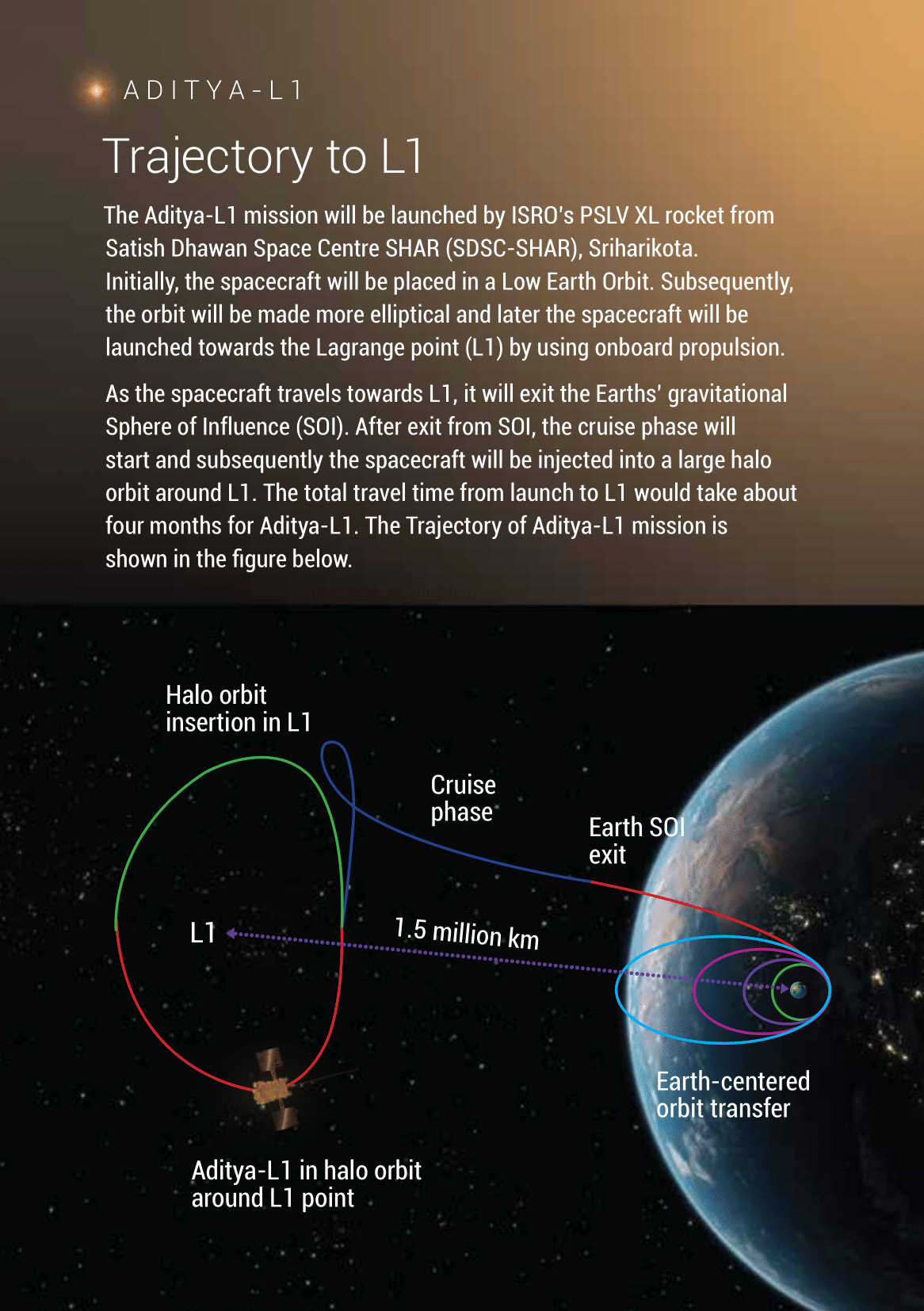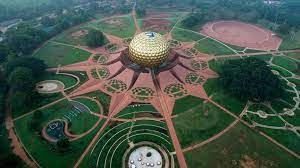
Current Affairs July 27, 2023: Multi-State Cooperative Societies, SVAMITVA Scheme, Smt. Phangnon Konyak, Marine Heat Waves
Subscribers of "Current Affairs" course can Download Daily Current Affairs in PDF/DOC
Subscribe to Never Miss an Important Update! Assured Discounts on New Products!
Must Join PMF IAS Telegram Channel & PMF IAS History Telegram Channel
{GS2 – MoC – 2023/07/27} Multi-State Cooperative Societies (MSCS)
- Context (PIB): Lok sabha has passed the Multi-State Cooperative Societies (Amendment) Bill, 2023.
Co-operatives
- Co-operatives are voluntary, democratic, and autonomous organisations controlled by their members.
- Multi-state co-operative societies (MSCS) operate in more than one state in various sectors such as agriculture, textile, poultry, and marketing.
- States regulate state cooperative societies’ incorporation, regulation, and winding up.
- Parliament can legislate on matters related to the incorporation, regulation, and winding up of MSCS.
- The MSCS Act 2002 provides for the functioning of MSCS under the Ministry of Cooperation.
Constitutional Status
- Part IXB of the IC grants constitutional status to cooperative societies and contains provisions for their democratic functioning. It was inserted by the Constitution (97th Amendment) Act, 2011.
- The SC, in 2021, held that Part IXB of IC would only apply to MSCS, as states have the jurisdiction to legislate over state cooperative societies (SCS).
Issues concerning the functioning of co-operatives
- Inadequacies in governance.
- Politicisation and the excessive role of the government.
- Lack of efforts for capital formation.
- Inability to attract and retain competent professionals.
- Indefinite postponement of elections to cooperative boards, etc.
Multi-State Cooperative Societies (Amendment) Bill, 2023
- The MSCS bill seeks to amend the Multi-State Co-operative Societies (MSCS) Act, 2002, to align its provisions with those provided under Part IXB of the Constitution (democratic governance).
Election of board members
- Under the Act, the existing board conducts elections for the board of an MSCS. The Bill amends this to establish a Co-operative Election Authority by GOI for conducting elections to MSCS boards.
- The Authority will consist of a chairperson, vice-chairperson, & up to three members appointed by GOI.
Amalgamation of co-operative societies
- The Act provides only for the amalgamation and division of MSCS. The Bill, however, allows state cooperative societies to merge into an existing MSCS, subject to state laws.
Fund for sick cooperative societies
- The Bill establishes the Co-operative Rehabilitation, Reconstruction and Development Fund to revive sick MSCS. Profitable MSCS (in the three preceding financial years) will finance the Fund.
Issue
- Reviving sick cooperative societies may burden profitable societies.
- It is unfair to force a profitable MSCS to fund a sick MSCS, which might be a direct competitor.
Restriction on redemption of government shareholding
- The Act provides that the shares held in an MSCS by certain central/state government authorities can be redeemed (repurchased) based on the society’s bye-laws.
- The Bill amends this to provide that any shares held by the central and state governments/authorities cannot be redeemed (repurchased) without their (authority’s) prior approval.
Issue
- While the provision ensures government control in case of malfunctioning co-operatives, it may go against the cooperative principles of autonomy and independence.
Redressal of complaints
- As per the Bill, GOI will appoint one or more Co-operative Ombudsman with territorial jurisdiction.
- The Ombudsman should inquire into complaints made by members of MSCS and adjudicate within three months of receiving the complaint.
{GS2 – MoPR – 2023/07/27} SVAMITVA Scheme
- Context (PIB): SVAMITVA was launched in 2021 on the National Panchayati Raj Day (24th April).
- SVAMITVA: Survey of Villages Abadi and Mapping with Improvised Technology in Village Areas.
- It is a central sector scheme of the Ministry of Panchayati Raj.
- It provides a ‘Record of Rights’ to village household owners.
- It aims to establish clear ownership of property in rural inhabited areas.
- It is implemented with the collaborative efforts of the Ministry of Panchayati Raj and
- The State Revenue Department and the State Panchayati Raj Department and
- Survey of India (SoI – National Mapping Agency under Department of Science & Technology, Ministry of Science and Technology).
- States or villages need to sign an MoU with SoI for the implementation of the scheme.
Key Objectives
- Land Governance: Enabling access to property rights to create accurate land records for rural planning and reduce property-related disputes.
- Economic Growth: Bringing financial stability to rural citizens by enabling them to use their property as a financial asset (collateral) for taking loans. It also enables the collection of Property taxes.
- Sustainable Habitats: Creating survey infrastructure and high-resolution Geographic Information System (GIS) maps to prepare a better-quality Gram Panchayat Development Plan (GPDP).


Achievements
- 31 States/ UTs with approximately 6 lakh villages have signed MoU with SoI.
- States with the most villages under the SVAMITVA are Uttar Pradesh, MP and Maharashtra.
{GS2 – Polity – IC – Parliament – 2023/07/27} Smt. Phangnon Konyak
- Context (IE): Smt. Phangnon Konyak, an Indian politician from Nagaland, became the first woman this year to be appointed to the panel of Vice-Chairpersons of Rajya Sabha.
- In 2022, she became the first woman to be elected as a Member of the Rajya Sabha from Nagaland.
- She is the second woman from the state to be elected to either the Parliament or the State Assembly.
- She made history again as the first woman from Nagaland in the Rajya Sabha to preside over the sessions as the chairperson.
Panel of Vice-Chairpersons
- As per Rajya Sabha rules, the Chairman nominates a panel of vice-chairpersons from among the members of Rajya Sabha.
- The panel consists of a maximum of six vice-chairpersons.
- One of the members may preside over the Council in the absence of the Chairman or the Deputy Chairman of Rajya Sabha.
- A vice-chairperson shall hold office until a new panel of vice-chairpersons are appointed.
Panel of Chairpersons in Lok Sabha
|
{GS3 – Envi – CC – 2023/07/27} Marine Heat Waves (MHWs)
Heat Waves
This topic is covered in PMF IAS Environment Book. We are making some additions here.
- A heat wave is a period of scorching weather. India Meteorological Department (IMD) declares heat waves when the maximum temperature remains 45°C or more, regardless of the normal maximum.
Causes
- Heat waves are caused due to shifting of Jet Streams (Rossby Waves; cause Heat Domes), hot local winds like loo (affects Gangetic Plains Region), and anthropogenic causes like global warming.
- Urbanisation aggravates heat waves in the form of Urban Heat Islands.
Please refer to Geography Book (Pages 231-237)/PDF for Jet Streams, Rossby Waves and Heat Domes.
Global Warming and Heat Waves
- The global average temperature increase since 1900 is around 1.3°C, in India, it has crossed 2°C.
- IMD and the Indian Institute of Tropical Meteorology (Pune) have established that the frequency and severity of heatwaves have risen significantly in India over the last three decades.
Effects of Heat Waves
- Sunstroke (results in body temperature >40°C) and vital organ failure: In 2015, 2,300 people died in India due to heat waves. A record heatwave in July 2021 killed 500 people in western Canada.
- Reduced human output: This happens due to adverse effects on mental health (the body works best in a narrow range of body temperature — 36-37.5°C).
- Economic cost: Increased expenditure on cooling appliances like ACs and refrigerators (this creates a positive feedback mechanism and enhances global warming. Heat wave more cooling appliances more emissions severe heat waves, and the cycle repeats).
- Ecological damage: Reduced biological activity and carbon sequestration.
- Forest fires: One of the worst consequence of heat waves in temperate regions are wildfires. This is evident in the 2019-2020 Australian Bushfires and July 2021 Western Canada Wildfires.
Marine Heat Waves (MHWs)
[UPSC 2019]How do ocean currents and water masses differ in their impacts on marine life and the coastal environment? Give suitable examples. (Answer in 250 words) |
- Marine heatwaves (MHWs) occur when ocean temperatures for a particular oceanic location are unusually extremely warm for an extended period — when the Sea Surface Temperature (SST) of a particular region rises to 3 or 4°C above the average temperature for at least five days.
- MHWs can occur in summer or winter and last for weeks, months or even years.
- 87% of MHWs are attributable to human-induced warming.


IPCC Special Report on the Ocean and Cryosphere in a Changing Climate (SROCC) on MHWs
Marine heat waves (MHWs)
|
Factors Influencing SSTs and Marine Heat Waves (MHWs)
High-Pressure Systems
- High-pressure systems are characterised by stable atmospheric conditions with clear skies. This allows more sunlight to penetrate and heat the ocean’s surface.
Rossby Waves
- Oceanic and atmospheric rossby waves occur due to the Earth’s rotation (Coriolis Force).
Oceanic rossby waves
- Oceanic rossby waves are slow, huge, undulating movements of the ocean that stretch across the planet for hundreds of kilometres in a westward direction.
- They travel along the thermocline (transition layer between warmer mixed water at the ocean’s surface and cooler deep water below) and redistribute warm and cold waters horizontally.
- If a rossby wave meander becomes stationary, it creates a conducive environment for MHW formation.
Atmospheric rossby waves
- Atmospheric rossby waves are meandering jet streams caused by the Earth’s rotation.
- In rossby waves, the polar air moves toward the equator while tropical air moves poleward.
- When these waves align with high-pressure systems, it can lead to prolonged warm and dry conditions over certain ocean areas, contributing to the intensification of MHWs.

ENSO (El Nino-Southern Oscillation)
- ENSO is the fluctuations in temperature between the ocean and atmosphere in the eastern and central tropical Pacific. It has two phases El Nino (warm phase) and La Nina (cool phase).
- El Nino leads to unusual warming of the eastern tropical Pacific, intensifying MHWs in the region.

- La Nina leads to unusual warming of the western tropical Pacific, intensifying MHWs in the region.

Madden-Julian Oscillation (MJO)
- MJO is an eastward moving trough (series of thunderstorms) in the tropics that recurs every 30-60 days. It consists of enhanced rainfall convective phase and suppressed rainfall convective phase.
- During enhanced phase, increased cloud cover leads to cooling effects and lower SST. Conversely, during the suppressed phase, reduced cloud cover leads to warming effects and higher SSTs.
North Atlantic Oscillation (NAO)
- NAO phenomenon is characterized by the fluctuation of atmospheric pressure differences between the Icelandic (Subpolar) Low and the Azores (Subtropical High).
- During the positive phase, the pressure difference is stronger than average. This leads to enhanced westerly winds (which increases ocean mixing) and increased storm activity. All these lower the SSTs.
- During the negative phase, the pressure difference is weaker than average. This leads to weaker westerly winds and calmer conditions with reduced cloud cover. This helps in the build-up of warmer SSTs.


Interdecadal Pacific Oscillation (IPO)
- IPO involves variations in SSTs and atmospheric circulation patterns in the Pacific Ocean.
- During the positive phase, the eastern Pacific tends to be cooler, and the central and western Pacific are relatively warmer. The resverse is conditions prevails during the negative phase.
Indian Ocean Dipole (IOD)
- IOD is defined by the difference in SST between the Arabian Sea and the eastern Indian Ocean.
- During positive IOD, winds over the Indian Ocean blow from east to west (from the Bay of Bengal towards the Arabian Sea). This results in the Arabian Sea (western Indian Ocean) being much warmer and the eastern Indian Ocean becoming colder and dry. In the negative IOD, the reverse happens.
Monsoons
- Monsoons are characterized by seasonal reversal of wind direction. They blow over south Asia, south-eastern Asia, northern Australia, China and Japan.
- During the wet season of a monsoon, there is usually abundant cloud cover and frequent rainfall in coastal regions. This causes a cooling effect on SSTs.
Impact of Marine Heat Waves (MHWs)
Impact on weather patterns
- The direct consequence of MHWs is weak winds. A more pronounced effect would be on global wind circulation and ocean currents.
- IPCC report indicates, the Atlantic Meridional Overturning Circulation (AMOC — explained in PMF IAS Physical Geography > Page 308), which ensures a northward flow of warm, salty water in the upper layers of the Atlantic and a southward flow of colder, deep waters, has already weakened.
- Any substantial weakening of the AMOC would cause:
- A further decrease in productivity in the North Atlantic,
- More storms in Northern Europe,
- Less Sahelian (southern part of Sahara Desert) and South Asian summer rainfall,
- A reduced number of tropical cyclones in the Atlantic, and
- An increase in regional sea level along the northeast coast of North America.
More severe cyclonic storms
- There is emerging evidence of an annual increase in the percentage of category 4 and 5 storms.
- These storms sustain their strength further by feeding on the moisture over warm ocean waters.
- At present, MHWs have gripped parts of the Pacific, Indian, and Atlantic Oceans.
- El Nino effect further worsens the situation by helping in the persistence and intensification of MHWs.

Source: Keeping pace with marine heatwaves
Destruction of Marine Ecosystem
Loss of Primary Productivity
- MHWs reduce the mixing between water layers and, consequently, reduce the supply of oxygen and nutrients for marine life, leading to death of kelp forests and sea grass.
- MHWs boost the growth of toxin-producing algae and suppressed the growth of small organisms at the base of the ocean food chain.
- MHWs also fuel the growth of invasive alien species, which can be destructive to marine food webs.
- They also alter the migration patterns of species including the primary producers.
|
Massive Coral Bleaching
- MHWs have resulted in large-scale coral bleaching (takes more than 15 years for corals to recover).
Harmful Algal Blooms (HABs)
- Marine HABs are caused by diatoms and dinoflagellates. HABs in coastal areas are often referred to as red tides because algal blooms caused by dinoflagellates turn the water reddish-brown.

Ocean Acidification
- Ocean acidification refers to the process of seawater becoming more acidic due to the absorption of excess carbon dioxide (CO2) by the phytoplanktons from the atmosphere.
- The warm waters due to MHWs are causing phytoplankton blooms and increasing the rate of ocean acidification (positive feedback mechanism global warming leads to more global warming/MHWs).

More information on ENSO, IOD, MJO, & Monsoon > PMF IAS Physical Geography 1st Edition
More on Coral Bleaching, Harmful Algal Blooms & Red Tides > PMF IAS Environment 2nd Edition





![PMF IAS Environment for UPSC 2022-23 [paperback] PMF IAS [Nov 30, 2021]…](https://pmfias.b-cdn.net/wp-content/uploads/2024/04/pmfiasenvironmentforupsc2022-23paperbackpmfiasnov302021.jpg)












